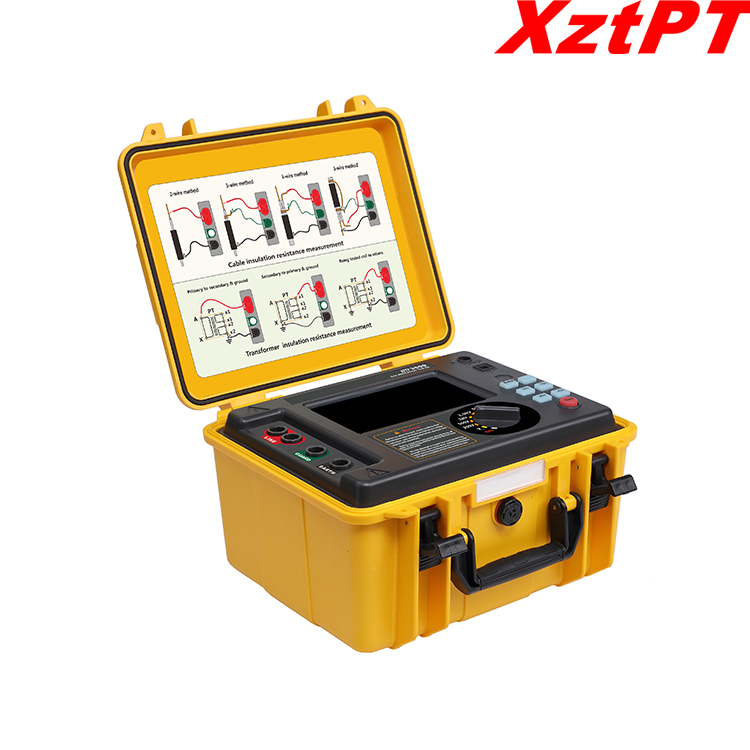English




1. Power system and transmission and distribution equipment
The insulation resistance tester is a core tool for power system maintenance, mainly used to test the insulation performance of equipment such as transformers, generators, cables, and switchgear. Specific scenarios include:
Substations and transmission lines: Regularly check the insulation resistance of transformer windings, busbars, and circuit breakers to prevent short circuit accidents caused by insulation aging or moisture.
Distribution equipment: Evaluate the insulation status of power cables, detect the insulation strength of distribution boxes and circuit breakers in humid or high-temperature environments.
Generator set: Ensure that the insulation performance of hydraulic and thermal generators meets safety standards, and prevent shutdown caused by insulation damage during operation.
2. Industrial manufacturing and automation equipment
In the fields of chemical, metallurgical, petroleum and other industries, testers are used to ensure the electrical safety of high load equipment:
Motor and frequency converter: Check the insulation resistance of the motor winding to avoid equipment overheating or fire caused by insulation degradation.
Industrial robots and production lines: Evaluate the electrical system insulation performance of automation equipment to ensure the stability of the production process.
Corrosive environmental equipment: Monitor the insulation status of electrical equipment exposed to corrosive gases or high temperature environments in chemical plants, refineries, and other places.
3. Architecture and Infrastructure
Electrical safety testing in the construction field relies on insulation resistance testers to complete key tasks:
Building electrical system: Testing the insulation performance of building distribution boxes, lighting circuits, and elevator control systems to prevent electrical fires.
Construction acceptance: Verify whether the insulation of wires and cables meets national standards (such as GB/T 3048) in new construction or renovation projects.
Underground facilities, such as power lines in tunnels and subway stations, require regular testing to avoid insulation failure caused by humid environments.
4. Transportation and new energy sectors
Modern transportation and new energy equipment have extremely high requirements for insulation performance, and the application scenarios of the tester include:
Electric vehicles: Check the insulation resistance of high-voltage components such as battery packs and motor controllers to prevent leakage risks.
Rail transit: Test the traction transformers and signal systems of electrified railways to ensure the safe operation of trains.
Wind power and photovoltaics: Evaluate the insulation status of wind turbines and photovoltaic inverters to adapt to harsh environments such as high altitude and salt spray.
5. Scientific research experiments and quality certification
Research institutions and enterprise laboratories use testing equipment for material research and product validation:
New material research and development: measure the resistance characteristics of nanocomposites and polymer insulation materials, and optimize their electrical performance.
Product certification: According to standards such as IEC 61557, insulation performance tests are conducted on wires and electronic components to support market access.
Teaching demonstration: The electrical engineering major in universities visually displays the principle of insulation failure and protective measures through a tester.
XZTY3500 High Voltage Insulation Resistance Tester
